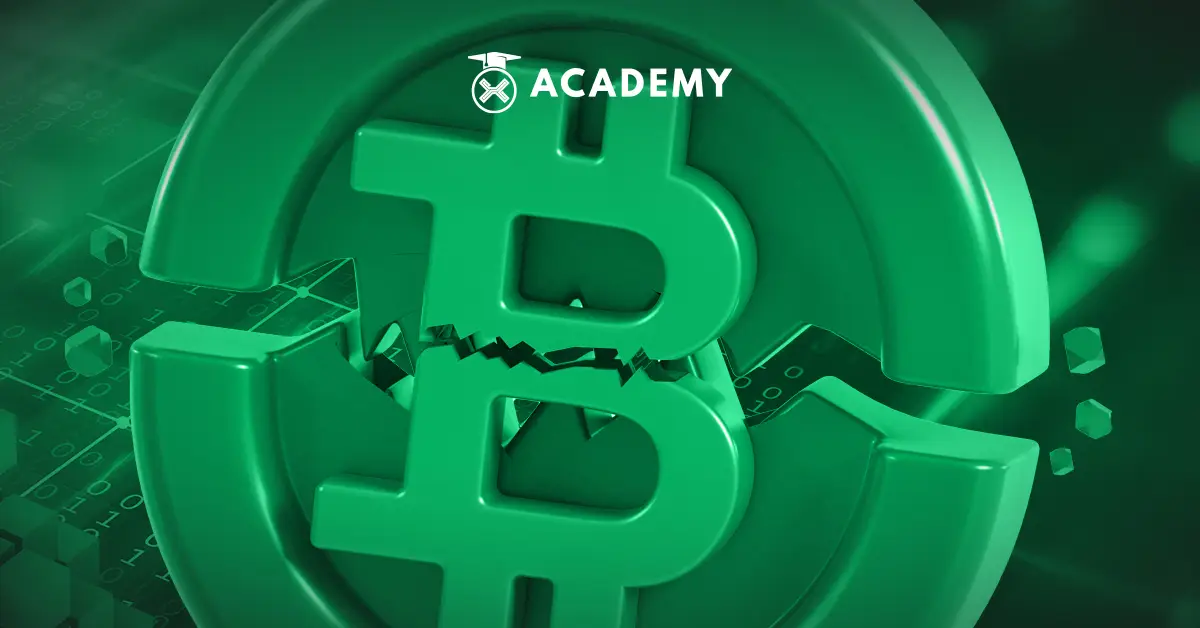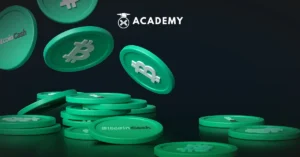
One of the key events in the crypto ecosystem is the halving of Bitcoin Cash. When a Bitcoin Cash halving occurs, miners’ reward for mining new blocks is drastically reduced.
It also happens periodically, around every 4 years, and aims to control inflation and regulate the supply of new coins on the Bitcoin Cash network.
The purpose of Bitcoin Cash halving is to maintain the stability of the asset value, prevent excessive inflation, and maintain the attractiveness for miners to maintain network security.
By reducing mining rewards, halving slows down the rate at which the supply of new coins grows, which can help maintain a balance between supply and demand in the crypto market.
What is Bitcoin Cash Halving?
Quoting bitdegree.org, by definition, Bitcoin Cash halving sounds like a pretty simple concept.
It’s an event that happens every 4 years (or so), and its purpose is to halve the mining profits earned by BCH miners.
How Bitcoin Cash Halving Works
Quoting the bitdegree.org page, if you didn’t realize it, Bitcoin Cash is very related to Bitcoin. This is something that might be obvious from the name of the network.
Like another popular project called Bitcoin SV (Satoshi Vision), Bitcoin Cash is the result of a hard fork of BTC. The new network was forked and created back in 2017.
While the reasons and facts behind the fork are not important for this BCH cut, what is important is how the Bitcoin Cash cut works. In principle, it is identical to Bitcoin.
Again, that makes sense. As a fork of BTC, BCH essentially uses all the same fundamental technology as its predecessor. However, if that’s the case, why don’t Bitcoin Cash’s truncations correlate with Bitcoin?
Simple, as mentioned earlier in the text, when it first launched, Bitcoin Cash used a different mining algorithm before switching back to the Bitcoin algorithm.
This earlier algorithm meant blocks were mined more quickly, and this, in turn, accelerated the truncation event.
The important point is that the cut dates of Bitcoin and Bitcoin Cash halvings depend not on some trivial day of the year but on block height. With both cryptocurrencies, a halving event occurs every 210,000 blocks.
Since Bitcoin Cash was launched in 2017 and initially used a different mining algorithm, the first BCH halving date is April 8, 2020 – starting at 630,000 blocks.
The second cut is scheduled to occur in 2024. The last Bitcoin day cut is said to happen sometime in 2140.
And BCH launched after two BTC cuts had already occurred, 4 years apart, so it stands to reason that the last cut of BCH will occur sometime in 2148 (since the maximum total supply of the two crypto assets is also the same).
Safe to say, that’s a very long time in the distant future. Whether it’s the first BCH cut or the one coming in 2024, one topic remains just as much discussed – the price of Bitcoin Cash.
The Impact of Halving on the Bitcoin Cash Ecosystem
Quoting kucoin.com and halving directly affect Bitcoin Cash by reducing the block reward given to miners, cutting it in half.
This significant change affects various aspects of the BCH ecosystem, including:
- Miners and Network Security: Direct impact of halving. Reduced rewards can lead to decreased profitability for miners. Especially for those operating with high costs or outdated equipment.
This decrease could lead to a temporary decrease in mining activity, potentially affecting network security. However, if the price of BCH increases in response to the reduced supply, mining could still be profitable, thereby maintaining network security.
- Transaction Costs: With reduced block rewards, miners may prioritize transactions with higher fees.
While Bitcoin Cash is known for its low transaction fees, there could be a slight increase as miners look to replace lost block rewards.
- BCH Price Performance Before and After Cuts: Historically, withholding events have led to price increases over the long term.
A reduced supply of new coins entering the market could lead to upward pressure on the price, provided that demand remains constant or increases.
Comparison with Bitcoin Halving Vs. Bitcoin Cash Halving
Bitcoin and Bitcoin Cash Halving are different processes for both cryptos. Here are some differences between the two that are important to know, including:
- Bitcoin Halving: Bitcoin undergoes a halving every 210,000 blocks, roughly every 4 years. These halvings reduce miner rewards from 50 BTC per block to 25 BTC, then 12.5 BTC, and at the last halving, to 6.25 BTC.The purpose of Bitcoin halving is to control inflation and reduce the supply of Bitcoin. In April 2024, Bitcoin halving will result in 3.125 BTC per block.
- Bitcoin Cash Halving: Bitcoin Cash also undergoes a halving every 840,000 blocks, roughly every 4 years. Bitcoin Cash halving reduces miner rewards from 6.25 BCH to 3.125 BCH.The purpose of Bitcoin Cash halving is to control inflation and reduce the supply of Bitcoin Cash.
The important difference between the two halving processes is in the frequency and amount of rewards given to miners. Bitcoin Cash halvings occur more frequently because Bitcoin Cash blocks have a larger capacity, although the reward amount is lower.
That impacts transaction fees, which are lower in Bitcoin Cash due to the higher mining rewards.
However, Bitcoin Cash has a larger block capacity, which allows for many transactions at a higher speed.
Both halving processes also affect the respective crypto prices. Bitcoin halvings occurred in November 2012, May 2016, and April 2024, and each time a halving took place, there was a significant increase in the price of Bitcoin.
Bitcoin Cash halvings occur every 840,000th block and are expected to impact the Bitcoin Cash price.
The difference between Bitcoin and Bitcoin Cash halvings lies in the different processes for controlling inflation and reducing each crypto’s income.
The difference in the frequency and amount of mining rewards affects the cost and speed of transactions and the price of each crypto.
The Importance of Halving in the Crypto Ecosystem


Indeed, halving helps control inflation in crypto networks by limiting the number of new coins produced.
This is in contrast to traditional currency systems where central banks can print unlimited new money, which can lead to inflation.
Halving also plays a role in regulating the supply of new coins entering circulation. By reducing the rewards given to miners, halving slows down the rate at which the supply of new coins increases.
This helps maintain a balance between supply and demand, which can affect the value and stability of crypto prices. Halving also has a direct impact on crypto prices.
Many believe that with less new supply, crypto prices tend to rise after a halving occurs. However, the market response to a halving can vary depending on various factors, including market sentiment, crypto adoption, and global economic conditions.
Furthermore, halvings are also an important tool for understanding the overall growth of the crypto ecosystem. Halvings affect not only the price of the crypto asset itself but also mining dynamics, miner participation, and network security.
Conclusion
To conclude, halvings in the evolution of Bitcoin Cash play an important role in regulating the supply of new coins and maintaining asset value stability within the crypto ecosystem.
By limiting mining rewards, halving helps control inflation and ensures that miners are incentivized to keep the network secure.
As a result, halving has become one of the key mechanisms in maintaining Bitcoin Cash’s long-term viability and growth.
When it comes to BCH’s second halving scheduled for 2024, there are various speculations on how this will affect the crypto ecosystem as a whole.
Some believe that this halving will lead to an increase in the price of BCH due to the reduction of new supply.
Others argue that the market response may vary depending on market sentiment, crypto adoption, and global economic conditions.
Fundamentally, however, the second halving of BCH is seen as an important event that could provide insight into the future development of Bitcoin Cash and the crypto ecosystem at large.
Buy Bitcoin Cash on INDODAX
Well, now you understand what Bitcoin Cash Halving is, starting from how it works to the impact of halving on the Bitcoin Cash ecosystem.
Furthermore, if you are interested in buying bitcoin cash, you can buy it on INDODAX.
Please note that INDODAX is the best crypto asset trading platform and is a beginner in buying and selling crypto assets in Indonesia.
INDODAX is always committed to providing investors with easy access to the crypto asset market.
As a disclaimer, it is also important to remember that crypto asset investment also has risks like other types of investment.
The risks referred to here are fluctuations in the value of its assets and the high level of volatility in crypto assets.
Therefore, before investing in crypto, it is better first to research and understand the intricacies of the assets to be purchased.
What are you waiting for? Start your crypto asset investment now only with INDODAX!




































































![Pundi X [OLD]](https://assets.coingecko.com/coins/images/2170/large/pundi-x.png?1696503130)








Be the first to comment